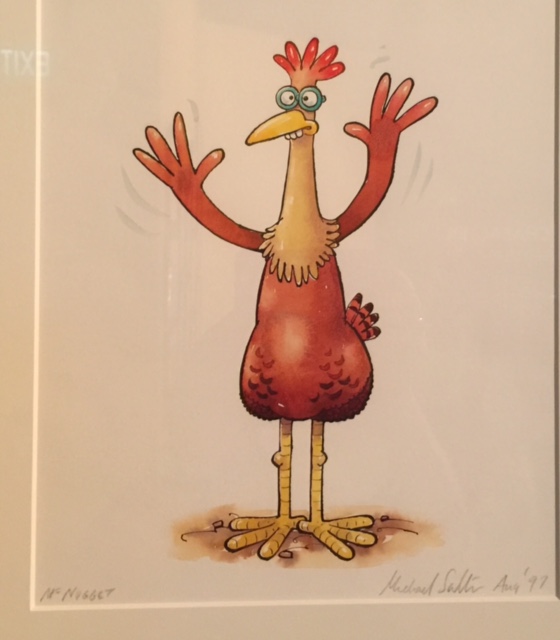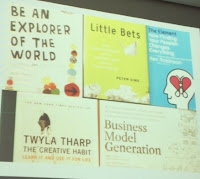Here is an interview I wrote for GatheringBooks
Thank you so much for featuring me
in your fantasy reading theme issue, Myra.
- What was the inspiration behind Princess Petunia's Dragon?
I started writing ‘Princess
Petunia’s Dragon’ as a picture book because I love the format. The story was
about a child who wanted a difficult pet, a dragon - who finally came into his
own when the weather suddenly turned cold. Each time I did a draft I found
myself developing the plot, until it ended up at 7,000 words for a reading age
of six to nine. I don’t make many conscious choices as I write, rather my
imagination makes demands on me.
- Princess Petunia strikes me as a feisty, determined, self-possessed girl who works for things that she wants. Was she a bit like you when you were younger?
Like you say,
Petunia is a feisty little girl and is probably the child I’d have liked to
have been. Writing about a quirky, determined child is exciting, especially
when she starts shouting back! I love the randomness of writing fiction.
- Tell us about BBB and gobstoppers and cobwebs. Clearly they are important elements in this story.
There are
elements in the story of Petunia – such as the gobstoppers – which grew out of
the drafting process. Gobstoppers are a mainstay of strip cartoons in the UK and
even saying the word outloud makes me smile. Freddy keeps one safe under a flap
on his ear. I was teased as a kid because I have a dent in one ear too. These
ideas jump up out of my tombola brain when I’m half asleep. (I'll just add that BBB is the big bottom in brown trousers, aka big brown bottom, belonging to the gobstopper trader, Gordon. Just having a bit of fun!)
- You worked as an editor. Tell us a little more about that.
My first job
after leaving university with a degree in French and Spanish and a year’s
teaching abroad was (obviously!) not
teaching or translating. It was at a children’s publishing firm doing
everything from typing invoices to packing books. All good experience, despite
the chilblains and the blisters. As I worked my way up in different companies,
I collaborated with designers, illustrators, authors and other editors, and it
was great fun. The editor’s name was never put on the book, but an author might
compliment me with a ‘you do it, you’re the expert’. I also worked as a
freelance editor in non-fiction – a calmer job, but rather lonely.
-You also worked as a language teacher. What are some of the insights that you have gained in your teaching that helped you become a better writer?
With language tuition, I showed my pupils how to view the world. Each language has
its own mindset, rather like a character’s viewpoint in a novel. As well as
speaking languages, I’ve always loved drafting translations over and over again
until I’ve done my very best.
What led you down the path of becoming a children's book author?
Why do I love
children’s books? Well, in the beginning there was an imaginary friend and I
told her stories. And then I told stories to my little sister, who was not
imaginary. Later, my daughter had two imaginary friends at once – oh dear, such
competition! I also grew up surrounded by fabulous books and parents who loved
reading out loud and often quoted our favourite characters. The rhythm and
sound of the text is magical to me.
When did I start
writing fiction? When a very feisty friend decided that I should provide her with
a taxi service to a writers’ group. Shades of Petunia in the making.
- You are an active member of SCBWI. How do organisations like this help aspiring authors and artists?
Although a
writer is somewhat of an ‘outsider’, being an insider of a supportive organisation
like the SCBWI is fun. It doesn’t matter if you have to move to a new country,
you can still find great people for mutual feedback and moral support. And get
involved in activities such as workshops and retreats.
- What are some of the best fantasy stories you read as a child, and to your own children?
 For me, fantasy
is inherent to all stories. It’s the author’s imagination which introduces the
reader to characters who can do things the child would love to do, or at least witness.
Paddington Bear, Little Mrs Pepperpot, Winnie the Pooh and Alice in Wonderland
are the stories that took root in my imagination. Later I read Tom’s Midnight
Garden where fantasy plays a role in a realistic setting. And I should add that
humour is the thing I remember most about the stories I read as a kid. My children were
lucky enough to grow up as the Harry Potter series was being published.
For me, fantasy
is inherent to all stories. It’s the author’s imagination which introduces the
reader to characters who can do things the child would love to do, or at least witness.
Paddington Bear, Little Mrs Pepperpot, Winnie the Pooh and Alice in Wonderland
are the stories that took root in my imagination. Later I read Tom’s Midnight
Garden where fantasy plays a role in a realistic setting. And I should add that
humour is the thing I remember most about the stories I read as a kid. My children were
lucky enough to grow up as the Harry Potter series was being published.
-What do you think is the role of fantasy in children's literature and its impact on children?
All good stories
are stuffed full of imaginative writing that allows a child to relax, dream,
and create their own world. I wasn’t asked to discuss the fiction I read in
primary school - I would just slip into a book and puzzle things out, or not, owning
my reading of the story in my head. I don’t know how fantasy affects children
other than the fact that young readers will naturally pick books containing the
type of emotion or action they find most intriguing and satisfying. Allowing
them to own this space for personal pleasure is so important.
- What should we look forward to from you in the coming months?
As for me, I am
working on an adventure for nine to twelve year-olds, set in the tropics. The
characters find their inner mojo in a believable setting, though an enhanced
version of reality is obviously integral to my fiction. There are other similar
stories in the pipeline. There may be more stories about Petunia and Freddy, so
please watch this space.
I am excited to
be giving a talk at the AFCC in June 2015. I will be doing more school and
library visits as I love sharing ideas directly with my readers. My next trip is to Mumbai at the end of April!
Please see my Facebook page for updates
































